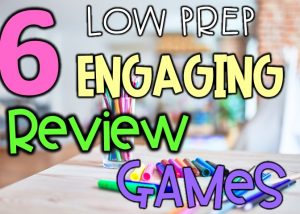Teacher friend, you made it through the interview process, which was a success, but now that you have been asked back to do a demo lesson, you probably have a whole new set of nerves. As someone who threw themselves back into the interview pool after 16 years to increase their quality of life, here are some tips to help you be as successful as possible.
Demo Lesson Tips for Success
Preparation: Ask Questions

One of the biggest reasons demo lessons are difficult is because there are so many unknowns. Unlike in your own classroom, chances are during a demo lesson, you do not know the makeup of the students in the classroom and other key components needed to teach a lesson. The best way to gain this knowledge is to ask questions when you receive that phone call to come in to demonstrate a lesson.
Here are some important questions you might want to ask:
- What grade level is it for?
- How many students are in the class?
- Do any of the students have special needs?
- How long should the lesson be?
- What type of technology is available?
- Who will be observing me?
- What level are the students?
Classroom Management
An essential part of teaching is having good classroom management skills. Even if you are given a short amount of time, providing a glimpse of your classroom management techniques is a very smart idea. This could be as simple as having 1-2 rules posted on a Google Slide that you are sharing with the students on a Smartboard. Using the method, you are only taking up about 1 minute of your time.
If you can find the classroom syllabus for the class you are completing the lesson in, it would be a smart idea to take one of the most important rules and use it in your lesson since the students are already accustomed to it. This also shows you took the time to research the building.

Make Connections to the Students

The most successful teachers build relationships with their students. However, this is a crucial element most new teachers completely disregard during the demo lesson.
While making name tents is an excellent idea because then you can call on students by their names, it isn’t enough. Plus, many experienced teachers will already have this set up for you.
Here are some ways to quickly build a rapport with students:
- Start the lesson with a “Would you rather?” question – this will get them talking and excited for your lesson.
- Use student names to address them.
- Introduce yourself and give a fun fact. Ask students to do the same.
- Ask the students a question that can later be connected to your lesson.
- Encourage active participation throughout the lesson
Carefully Plan Your Demo Lesson

Based on the criteria given to you, do your best to plan an activity that has a
- hook
- core activity
- assessment
The hook should be something that will engage your students.
Examples of hooks are:
- surveys or graphs
- short video
- game
- something that gets students up and moving
- music
Your demo lesson will need a core activity. The core activity will include the subject matter you are teaching. One method you might want to try is:
- Teacher-led mini-lesson
- Student Group work – pairs or small groups or a Turn and Talk
- Independent Practice
You will need to close out your lesson with an assessment. It can and should be a brief assessment, perhaps an exit ticket, so you can individually assess student comprehension of your demo lesson.
Distribute copies of a formal lesson plan and materials for those observing you.
Keep Engagement High
Throughout your demo lesson, keep engagement high. Doing so will show others you are knowledgeable in your subject matter, confident, and on your way to becoming a successful teacher. Some ways to increase engagement are:
- Ask questions – this helps keep students focused and allows you to assess their ability to complete the task.
- Let your personality shine through – be animated. Let your personality shine through to connect to the content and the kids!
- Use visuals – be prepared to hit on different learning modalities to help all learners. Using charts, manipulatives, etc., will help increase engagement.
- Incorporate variety – as stated above, having the students do different things throughout the demo lesson will keep them interested.
- Use appropriate body language – Make eye contact with students and gesture to emphasize points.

Of course, you’ll want to remember to BREATHE! You’ve made it far in the process, so keep that in mind as you follow my demo lesson tips. After your lesson, reflect on what went well and what you would change in the future.
Good luck, teacher friend!




